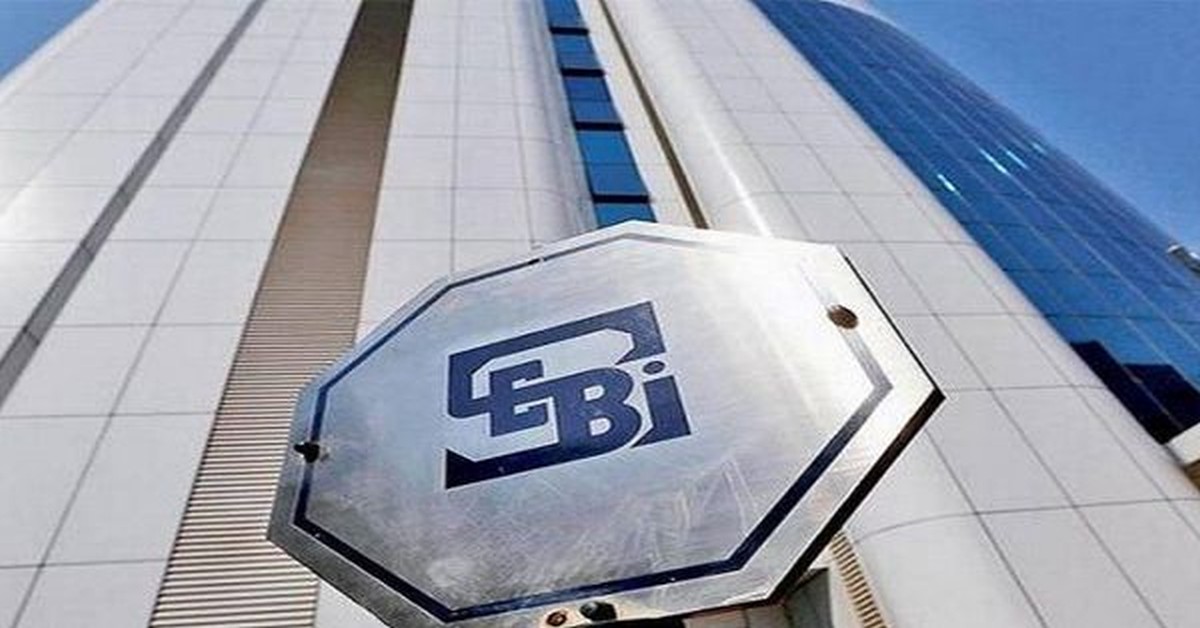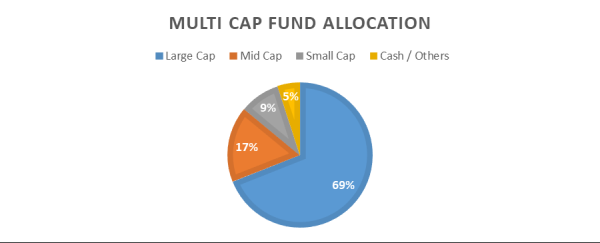The Securities and Exchange Board of India (SEBI) on Friday 11th Sep 2020 announced a detailed structure for multi-cap Mutual Funds.
How these changes in Multi cap funds impact you as an Investor? What is the opportunity in Direct Equity in Mid and Small cap? What action is to be taken in response to this announcement? Do we need to change portfolio allocation? Do we stop SIP in Multi cap funds?
We answer all the above questions for you in the most simplistic manner.

|
Existing rules for Multi cap Fund |
New rules for Multi cap as per recent SEBI circular |
|
Minimum 65% in Equity (Large, Mid or Small cap) No restriction on allocation of corpus. |
Minimum 75% in Equity [25% in Large cap, 25% Mid cap, 25% in Small cap] Existing schemes will have to comply with the circular within one month of the Association of Mutual Funds in India (AMFI) publishing the new list of Large, Mid and small cap stocks in January 2021. |
List of Stocks as per AMFI for the period ended June 2020.
Fact check on existing Multi cap funds
|
Mutual Fund Industry AUM (managed by 41 AMCs) – Equity, Debt, others |
27.94 lakh crores |
|
Out of above, Equity Funds |
11.85 lakh crores |
|
Out of above Multi cap Funds (35 Fund House has Multi cap Schemes) |
1.46 lakh crores |

This implies that Multi cap is very popular category across the Mutual Fund stakeholders.
Data as on 31st Aug 2020 (source: Ace MF)
What may be the course of action by AMCs in response to the SEBI announcement?
Option 1: Multi cap Funds may change the portfolio allocation as per new SEBI rules
To effect this change, Multi cap scheme may divest large cap to reduce allocation of Large cap to 50% and invest in Mid and Small cap to allocate 25% each.
For eg : Largest Multi cap Scheme : Kotak Standard Multicap fund with Current AUM of Rs. 29,714 crores. Out of this 77.68% is in Large cap, 18.25% in Mid cap, 2.89% in Cash/Others and 1.18% in Small cap i.e. Rs 350 crores. Now, to effect the recent announcement, fund manager needs to invest approximately Rs. 7,000 crores in Small cap stocks. Currently, only 2 small cap schemes (HFDC Small cap & Nippon small Cap) are there in the industry with AUM of more than Rs. 7,000 crores. So investing this much amount in Small cap stocks is not as simple as it looks considering the challenges of finding promising companies with attractive valuations and availability of liquidity.
However, most schemes may not prefer taking such re-allocation actions as it will increase the volatility in schemes as maintaining 50% at all times in Mid and Small cap irrespective of its valuation will make the scheme unviable for existing investors.
Option 2: Re-classifying their existing multi-cap schemes under other categories / Merger with existing schemes in other categories
Many schemes may prefer to change the category or merge Multi cap category with other relevant category schemes, for instance, Large & Mid cap, Focused category, etc.
Existing allocation of Multi cap in most cases is very similar to allocation of Large & Mid cap category. Large & Mid cap category emerged in Oct 2017 as a result of the Categorization and Rationalization of Mutual Fund Schemes and currently has 27 schemes and AUM of Rs. 58,000 crore. Large & Mid cap category by existing SEBI rules need to keep at least 35% each in Large & Mid cap stocks and balance 30% may be allocated as per Fund manager’s discretion. Most funds in this category prefer 65% in large cap and 35% in mid cap.
So possibly (a) Fund houses which don’t have schemes in Large & Mid cap category may change the fundamental attributes of Multi cap schemes to Large & Mid cap and (b) Fund house which already have schemes in Large & Mid Cap category may merge the existing Multi cap with Large & Mid cap schemes.
Here is some information of existing Multi cap and Large & Mid cap AUM of few AMCs (for Illustration) which may possibly consider merging the schemes.
|
Multicap |
AUM in crores |
Large and Midcap |
AUM in crores |
|
ABSL Equity Fund |
11,023 |
ABSL Equity Advantage Fund |
4,351 |
|
Axis Multicap Fund |
6,434 |
Axis Growth Opp Fund |
1,381 |
|
DSP Equity Fund |
3,725 |
DSP Equity Opportunities Fund |
5,016 |
|
Franklin Equity Fund |
8,591 |
Franklin Equity Advantage Fund |
2,140 |
|
HDFC Equity Fund |
19,797 |
HDFC Growth Opp Fund |
1,391 |
|
ICICI Pru Multicap Fund |
5,593 |
ICICI Pru Large & Mid Cap Fund |
2,500 |
|
Kotak Standard Multicap Fund |
29,714 |
Kotak Equity Opportunity |
3,600 |
|
Motilal Oswal Multicap 35 |
11,239 |
Motilal Oswal Large & Midcap |
475 |
Also possible that some of the existing funds may change category to Focused where there is no Market cap condition by SEBI. Only condition is that Focused category should have Max 30 stocks.
For eg. Parag Parikh (PPFAS) Long Term Equity Fund may change category to Focused as their portfolio mostly has less than 30 stocks.
Some AMCs (like Mirae Asset AMC) are not impacted by this development as they don’t have any scheme in Multi cap Category
Should Direct Equity Investor Jump to Mid and Small cap stocks..?
Social media is flooded with messages on opportunity in Mid and Small cap stocks and lists of ‘Best Small cap stocks to invest” J
There may be some reshuffling, irrespective of what AMCs plan of action is. The opportunity in Mid and Small cap is still a grey area. Depending upon the option I or II above selected by the AMCs there maybe opportunity in stocks. If option I above is selected by AMCs, they shall divest Large cap and invest in Mid and Small cap to rebalance the existing allocation. If Option II is selected by AMCs and the Multi cap scheme is merged with Large & Mid cap category which also mandates minimum 35% in Mid cap, again some reallocation from Large cap to Mid cap may happen.
All this volatility and uncertainties may also trigger interests of HNI/ PMS who may invest in Small and Mid cap stocks to take advantage of this situation.
Mid cap stocks may see inflow of investment from Mid cap funds as some mutual fund investors may now invest in Midcap Funds. However, this rally may be short lived as many mutual fund investors in the long run prefer to stick to large cap oriented portfolio to avoid extreme volatility. Hence, they will eventually shift to funds with greater Large and Mid cap allocation.
Not to forget that we are just recovering from COVID 19 pandemic and US election is round the corner. It may seem tempting to wash hands in this behti ganga however sometimes the tide may turn. So better be cautious than sorry.
What Existing Mutual Fund Investor Should do?
I would suggest don’t take any action in Haste. All the AMCs will intimate the plan of action to incorporate the new SEBI rules on Multi cap shortly. Also, they may collectively approach the market regulator for a re-look at the changes made in the regulation / seek relaxations / seek to introduce new category ‘flexi-cap’.
Don't Panic! Please wait for clarity from the AMCs and Remember : Sometimes ‘Inaction is the best Action’. Take informed investing decisions and align your portfolio in line with your Goals and Risk Profile and follow suitable asset allocation strategy.
If you are expecting joy ride in Mid and Small cap funds, be ready for extreme roller coaster experience. By looking at historical data, some funds in this category have generated negative return in 6 to 7 yrs horizon also. Always follow asset allocation as news will come and go but if you want to be here for long term keep emotions aside and play it well. J Have a great Weekend ahead..!
The author can be reached at nitesh@nimitwealthmanagement.com








 CAclubindia
CAclubindia
